CEVENNES
History

History
Popular destinations FRANCE
| Alsace | Ardeche | Auvergne |
| Brittany | Burgundy | Cevennes |
| Corsica | Cote d'azur | Dordogne |
| Jura | Languedoc-roussillon | Loire valley |
| Lot | Normandy | Picardy |
| Provence |
History
Cevennes before Christ
Ca. 1000 B.C.
The Cevennes were inhabited by various Celtic tribes: the Volcae (especially the Arecomici tribe) in the south, the Gabali in the north, the Ruthenians in the west, the Helvii in the south-east and the Vellavii in the north-east.
3rd to the 1st century B.C.
The Romans occupied the Massif Central and the Vellavii, Helvii and Arecomici tribe made an alliance with the Romans. The Gabali and Ruthenians made a pact with the Gallic king from Auvergne and French folk hero Vercingetorix (c. 82-46 BC), who eventually lost the Gallic revolt (53-52 BC) at the Siege of Alesia by the Roman soldiers of Emperor Julius Caesar. For this purpose, Julius Caesar's army crossed the Cevennes. After the total conquest of Gaul (now France, Belgium, large parts of Switzerland, northern Italy and parts of the Netherlands and Germany west of the Rhine) the Romans remained there until the 5th century AD and founded the provinces Gallia Narbonensis and Gallia Aquitania.
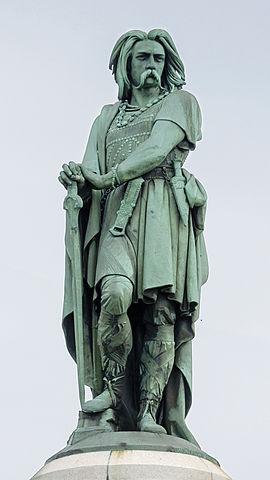 Statue of the Gallic King VercingetorixPhoto: Myrabella CC BY-SA 4.0 no changes made
Statue of the Gallic King VercingetorixPhoto: Myrabella CC BY-SA 4.0 no changes made
Cevennes after Christ
*In 77 AD, the Roman soldier and man of letters Pliny the Elder declared that the inhabitants of Rome liked a cheese made in Mont Lozère the best*.
During the 3rd century, many dioceses were established in the Cevennes after the Christianisation from the south (Nîmes) by Saint Bodile and from the north by Bishop Privatus of Mende.
In the 4th century, the Visigoths, an (East) Germanic people, installed Arian priests (a movement within Christianity that did not accept the trinity) in the Cévennes.
From the 5th century onwards, the Franks and the Visigoths fought over the south of France, while the Huns slowly advanced throughout Europe. The Visigoths won this battle but left the Roman structure in the area intact and continued to use Roman money, architecture and all other Roman achievements.
*In 464, the poet Sidoine Appolinaire (431-489) describes his journey through the upper Cevennes and mentions in particular Trevidon, today's Saint-Laures-de-Trèves, where the Gallo-Roman politician Tonantius Ferreolus, Praefectus praetorio of Gaul from 450-453, was living at the time*.
From the 7th to the 10th centuries, the Cevennes suffered from Moorish attacks and the Saracens from Spain conquered the area from their base at Nîmes, including the Vallée Française, a French enclave in the Visigoth-occupied territory. The Saracens occupied the Cevennes from 720 to 750.
From the 9th century onwards, the Cévennes were part of the Frankish Empire for a long time, but after the Treaty of Verdun in 843, the Cévennes were not part of France for five centuries. The Treaty of Verdun settled the division of the Frankish Empire after the death of Louis the Pious (778-840) among his three surviving sons, Lothair I (795-855), Louis the German (806-876) and Charles the Bald (823-877). The treaty also ended a three-year Carolingian Civil War.
After the Verdun Treaty, the Cevennes fell under the West-France or Francia Occidentales (also called West-France or West-France) of Charles the Bald, which ran along an imaginary line from Antwerp via Mâcon to Nîmes in southern France.
The successors of Charles the Bald showed little vigour and several territorial princes seceded from the Frankish realm. Under Charles III the Fat, the Frankish unity was restored to some extent, but in 887 Charles was deposed and the West and East Frankish empires gradually came into being, from which France and Germany would eventually emerge.
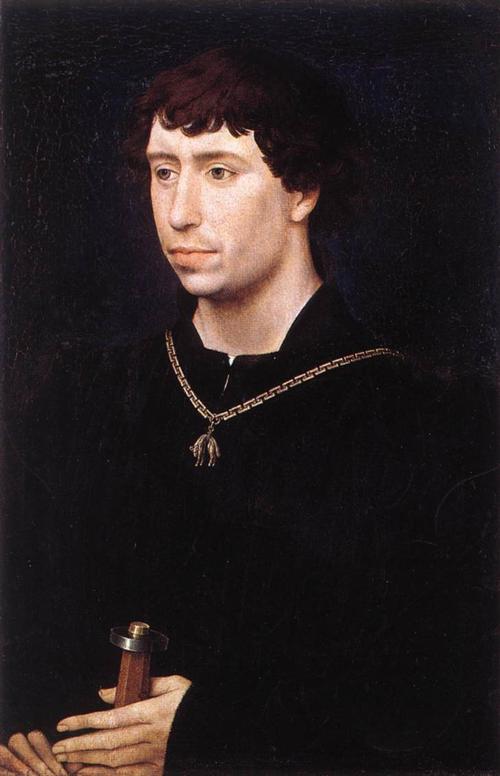 Charles the Bald 'ruled' the Cevennes in the 8th centuryPhoto: Web Gallery of Art in the public domain
Charles the Bald 'ruled' the Cevennes in the 8th centuryPhoto: Web Gallery of Art in the public domain
The 11th century was marked by the large religious orders that settled in the Cevennes, the region was, as it were, flooded with monks in overcrowded abbeys. In order to solve this overpopulation, the abbeys were decentralised. Feudal princes gave them buildings, land and livestock in exchange for the products this produced. Chestnut trees and other cultures were planted on a large scale.
*In 1020, Abbey St. Guilhem le Désert had about 450 monks and more than 4000 sheep. These sheep were taken to the pastures on the hills and mountains of the Cevennes from early spring until late summer.*
*Almost all place names with Saint in their name were originally monastic villages, founded by a number of monks.
13th century
-Somewhere in the 13th century, the Order of Saint-Jean-de-Jérusalem (also called the Order of Saint-John) founded 'La Commanderie de Gap Francès' at the foot of Mont Lozère.
-Alès is the first city in the Cevennes with a consulate in 1200.
-In 1233, a royal envoy is installed in Saint-Etienne-Vallée-Française.
-1287: the bishop of Viviers, until then the diplomatic representative of the emperor, declares himself a subject of the then king of France, Philip IV the Fair. The spiritual heads of the various dioceses were given temporary power. In this way, the Bishop of Mende became Count of Gévaudan (former French province, almost corresponding to the current department of Lozère).
-In 1295 a seat for the king's representative was installed in Anduze.
14th century
-1307: Philip the Handsome and the Bishop of Gévaudan, William Durant the Younger (c. 1266-1330) end the feudal relationship between the king and the bishop. Documents in which all the possessions were listed ('Feuda Gabalorum') showed that almost all the present villages and towns of the Cevennes were already inhabited at the beginning of the 14th century.
-1308: The Bishop of Viviers submits to King Philip the Handsome.
-1317: End of the Cathars or Albigensians, a religious movement that had a large following especially in the 12th and 13th century in the western Languedoc, but also in the Cévennes. Many of these 'apostates' of the Holy Roman Church in Rome fled from France, but most were killed. The last four Cathars were burned in Carcassonne in 1329.
-1340: The first plague or "black death" hit one third of Europe and arrived in the Cévennes in 1348.
-1362: The Benedictine Guillaume de Grimoard, born around 1310 in Grizac and prior of the abbey of Chirac and abbot of the abbey of Saint-Victor in Marseille, was pope of the Roman Catholic Church in Rome from September 28, 1362, until his death on December 19, 1370, under the name of Urban V.
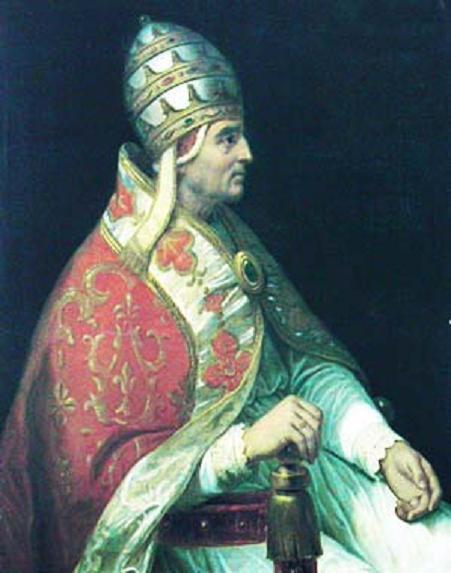 Urbanus V (Guillaume de Grimoard)Photo: Palais des Papes in the public domain
Urbanus V (Guillaume de Grimoard)Photo: Palais des Papes in the public domain
-In the years 1362-1363, the Cevennes suffered greatly from so-called "Grandes Compagnies", large groups of "unemployed" mercenaries who occupied the fortified village of La Garde-Guérin and burned Florac to the ground.
15th century
-Between 1415 and 1435, the fighting between the Armagnacs and the Bourguignons devastated the Cevennes. During the Hundred Years' War (1337-1453), the Armagnacs were the supporters of the murdered Louis I of Orleans (1372-1407); the Bourguignons fought for John I of Burgundy (1371-1419), nicknamed John the Fearless and later Philip the Good (1396-1467).
Afterwards, the region also suffered badly from the plundering of the soldiers of the Spaniard Rodrigo de Villandrando († ca. 1457), who was not for nothing known by the nicknames Emperor of the Plunderers (Empereur des Brigands) and Slayer (L'écorcheur).
-In 1465, the old town of Saint Germain de Calberte, at the foot of the castle Saint Pierre, was destroyed and deserted for unknown reasons, ascribed to the plague which reigned there at the time.
16th century
The social situation for the common man in the 16th century was not good. The notables lived off the people's monetary contributions, commercial activities and exploitation of property. Approximately 20% of the population owned more than 70% of the land. Almost 80% of the population had no more than 2 ha of land for themselves and often nothing at all.
The 16th century was also the century in which Protestantism arose, a movement within Christianity that arose after doctrines and practices in the medieval Catholic Church in Western Europe began to arouse much opposition. This so-called Reformation would also have a great influence in the Cevennes.
-1533: There is talk of heresy in Alais and in Gévaudan.
-1547: The Franciscan Nicolas Ramondy pronounced a "heretical" Lenten sermon in Anduze.
-1550: Diana of Poitiers (1499-1566) represented the Baron of Florac in the administration of Gévaudan because real nobility was lacking in the Cevennes.
-1560: The first Protestant churches were built in the Cévennes and in Aigladines a first, then still clandestine, synod was organised, an ecclesiastical assembly.
-1562: Religious war broke out, Protestant armies united in the so-called 'Cause' and besieged the city of Mende, now the capital of the department of Lozère.
February 1573: Meeting in Anduze to create 'Les Provinces de l'Union', also called 'Provinces-Unies de Midi', a kind of Huguenot state in the south of France, patron was Henry I, Prince of Condé (Henri de Bourbon-Condé, 1552-1588). The Huguenots created a kind of federative republic in which each province was largely autonomous.
 Henry I, Prince of CondéPhoto: Public domain
Henry I, Prince of CondéPhoto: Public domain
1598: Henry IV agrees to the Edict of Nantes, which allows Protestants to worship under certain conditions and to practice all professions again.
1599: Start of large-scale planting of white mulberry trees, whose leaves are the sole food of the silkworm, grown for the silk industry. The silk industry would become very important for the economy of the Cevennes.
17th and 18th century
The Cévenols and the Caussenards (living in the hills) lived far away from the economically important areas of France and occupied themselves with subsistence farming, chestnuts and some livestock. Especially in winter, they were busy making small woollen towels, called 'cadis'.
Although there was not much profit in it, it became an important industrial activity for the region.
Only a tenth of the wool was made in the region, the rest was imported. The cloth was sold to countries such as Switzerland, Germany, Italy and Malta. In the central part of the Cevennes, the wool industry was even more important for the economy than the silk industry for a long time.
1600: Jesuits settled in Aubenas, the beginning of a Catholic attempt to regain the lost territory in the Cevennes.
1612: Creation of the synodical province of the Cévennes.
1627: The most important period of the struggle against the Huguenots in the Cevennes, was initiated by King Louis XIII, 'le Juste' or the 'Just', and especially his prime minister, Cardinal Richelieu. The battle was mainly between the famous Protestant and war strategist Henri II de Rohan and the royal troops, the so-called 'dragons noire'. After thirteen months, the Huguenot revolts came to an end on 27 September 1629 with the Treaty of Alais. The Huguenots lost their territory and their political and military achievements, but they retained their religious rights which had been enshrined in the Edict of Nantes.
 Henry II 'duc' de RohanPhoto: Public domain
Henry II 'duc' de RohanPhoto: Public domain
Around 1660: opening of the first silk-spinning mills and factories in Anduze, Alais (now Alès) and Ganges, among others.
1683: Protestants of Saint-Hippolyte-du-Fort hold mass in a destroyed church; the first open resistance of French Calvinists against Louis XIV.
October 1685: Revocation of the Edict of Nantes; a few weeks later, the first forbidden Protestant meetings take place. The economy in the Cévennes is flourishing, but is ruined by the suffering and persecution of the Protestant population.
1687: Establishment of the Catholic diocese of Alais (now Alès) to receive converts or "new-borns".
1696: New professions arise due to the economic prosperity, also in the more remote regions: baker, bricklayer and clogmaker. The economy of the Cévennes at this time also cooperates closely with, among others, the Rhône valley and southern France. This also explains the large number of markets held, the largest being that of Barre des Cévennes.
24 July 1702: The priest François de Langlade du Chayla or Abbé du Chayla, two other priests and a catholic family from Dévèze are murdered and this is the start of the Camisard war. Camisard is the French name for the Protestant rebels with their long blouses or 'camise'.
 François de Langlade de ChaylaPhoto: Public domain
François de Langlade de ChaylaPhoto: Public domain
1709: Severe winter with great famine in northern Lozère. In the south, the chestnut trees provided enough food.
The plague strikes again: between 1722 and 1724, around 30,000 people die in the Gévaudan region and the population of Marseille is halved.
1735: Start of cotton industry in Aubenas.
1750: In order to promote silk cultivation, royal financial support is given for planting more mulberry trees.
1787: The Edict of Versailles, better known as the Edict of Tolerance, was a law signed by King Louis XVI on 7 November 1787 which gave non-Catholics the right to practise their religion openly and, for example, people could now marry without the obligation to convert to the Catholic faith. The Edict of Versailles did not yet immediately provide freedom of religion in all of France, it was actually a tacit acceptance, but it did put an official end to religious persecution in France.
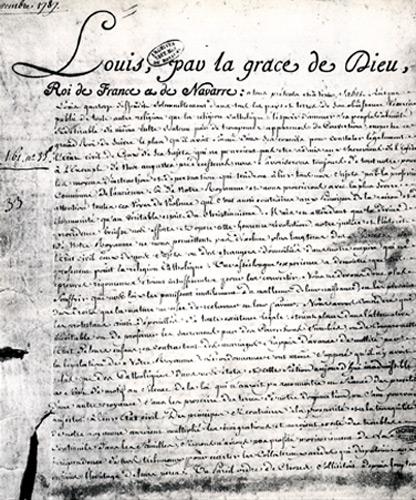 Text Édit de Tolérance, signed by Louis XVIPhoto:Public domain
Text Édit de Tolérance, signed by Louis XVIPhoto:Public domain
1788: Biggest harvest of mulberry leaves until the middle of the 19th century.
1790-1792: Three so-called ''Camp de Jalès'' (Jalès is a plain in the southeast of the Massif Central between Gard and Ardèche), where revolutionary nobles, religious and Catholic peasants went to war against royalists in the first years of the French Revolution. During the third ''Camp'' in 1792, Count and French general François-Louis de Saillans (1741-1792) was captured and killed.
François-Louis de JaillansPhoto: Public domain
1793-1815: The French Revolutionary and Napoleonic Wars (also called Coalition Wars or French Wars) were seven major and somewhat smaller wars of European powers against revolutionary France and, after 1799, against Napoleon's France. These wars cost many inhabitants of the Cevennes their lives.
19th century
1820: Economic prosperity of the middle classes gives a boost to the silk industry.
1825: Creation of mining company, forges and foundries in Alès.
1833: Paulin Talabot (1799-1885), a railway and canal engineer, unites all the mining concessions of La Grand-Combe in the 'Compagnie des Mines de la Grand'Combe et des Chemins de fer du Gard'. The plan was to build a railway to transport coal from the mines at La Grand-Combe to Nîmes on the French south coast.
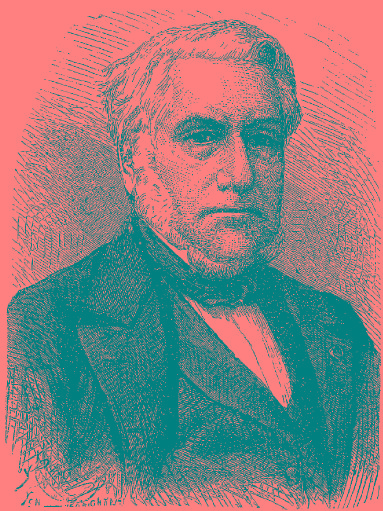 Paulin TalabotPhoto:Public domain
Paulin TalabotPhoto:Public domain
1840-1845: The disease "La prébine" affects the silkworm.
1845: The 100 km railway between La Grand-Combe and Beaucaire comes into operation.
1846-1896: The population of the mining area tripled.
1850: The silkworm disease 'La pébrine' assumed epidemic proportions and wreaked havoc on the silk industry.
2 December 1851: Self-coup of Louis Napoleon Bonaparte, President of the French Republic from 1848 to 1852 and nephew of Napoleon I Bonaparte; he dissolved parliament, after which many revolutionaries turned their backs on him. In 1852, after a plebiscite, the Second Empire or 'La Seconde Empire' was proclaimed. Almost all French people voted for Napoleon as hereditary emperor and he remained as Napoleon III until 1870. The self-coup in 1851 was supported by many Protestants from the Cevennes.1864: Invention of the loom, important for the production of silk socks.
1865: Louis Pasteur, famous French chemist and biologist, travels to Alès to investigate the silk worm disease. In 1868 he discovers the cause of the silk worm disease and develops a potential cure.
Between 1856 and 1914, the population of the Lozère-Cévennes fell by 39% due to two silk-worm crises and, since 1860, the ink disease, which can kill a chestnut tree in two or three years. In the Lower Cévennes, viticulture, as a substitute for jobs in the silk industry, suffered greatly from a new disease: phylloxera (Daktulosphaira vitifoliae), a species of aphid from the Phylloxeridae family.
Between 1861 and 1911, increased mining activities increased the population of Grand Combe from 7,700 to 11,500 inhabitants. In Alès, about 8,000 new inhabitants arrived. The mining companies dominate all life in the region in terms of housing, clothing, medical facilities, education, church buildings.
1870: The ink disease (la maladie de l'encre) takes very serious forms, many trees die and are replaced in the lower Cevennes by Scots pines and Maritime pines. Chestnut cultivation was replaced by the cultivation of cereals and vines, among others. In the town of Sumène, chestnut wood was used to make barrels.
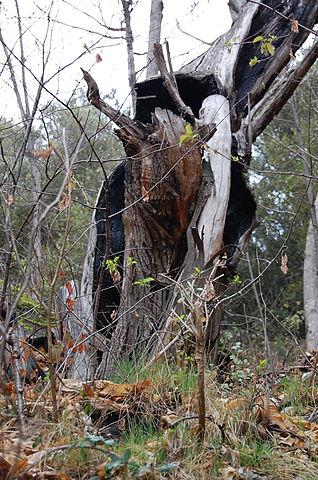 Chestnut tree affected by ink diseasePhoto: Lycyin CC 3.0 no changes made
Chestnut tree affected by ink diseasePhoto: Lycyin CC 3.0 no changes made
1873: Construction of the Marquarès tunnel near St. André de Valborgne, connecting the Gardon and Tarnon valleys.
1874: Realisation of a railway line between Vigan and Lunel via St. Hyppolite Dufort.
1880: In addition to silk worm diseases, the silk industry was also under serious threat from cheap silk from the Far East. Fortunately the number of jobs in the mining industry tripled and provided a lot of employment: in Grand Combe 5000 extra jobs, in Alès/Bessèges 3000 extra metal workers and 13,000 miners.
1881-1882: First important strikes in the mining area.
1890/1891/1900/1907: Heavy autumn rains cause major floods, the so-called 'Gardonnades'.
20th century
1906: In the travel guide 'JOANNE', predecessor of the Blue Guide, the Cévennes are mentioned for the first time as a tourist destination.
1906: Railway line Anduze to St. Jean du Gard is inaugurated.
1907-1916: Construction of the railway Florac to Sainte Cécile d'Andorge
1 August 1914: Start of the First World War; the departure of the soldiers causes an exodus in the villages of the Cévennes. In the canton of St. Germain de Calberte, 225 of its soldiers die. Meanwhile, the women mostly do the work in the fields, as was often the case with Protestant families.
Between 1911 and 1921 the economic situation in the cevennes is very bad. there is a large exodus of people looking for work, about 20% of the men and 25% of the women between 20 and 40 years leave for other regions.
1943-1944: The (Protestant) population played an important role in the Second World War. Having suffered from religious persecution for a long time, many Jews in the Cevennes were helped into hiding, especially in the town of Le Chambon-sur-Lignon.
1958: After the devastation of several floods, it is decided to build dams near St. Cécile d'Andorge and Camboux. The Roman bridge in St. Jean du Gard suffers great damage.
1959: The founding of the Coopérative Laitière de Pelardon des Cevennes en Vallee Français, a goat cheese cooperative, which showed that the agricultural sector wanted to establish itself in the economy of the Cevennes and increase production.
Due to the poor sales results, the underground mines stopped harvesting semi- and quarter-fat coal and closed their doors.
1965: Closure of the last silk spinning mill, opening of the new industrial zone Clavières-Groupillac near the city of Alès.
1970: Opening of the Cevennes National Park
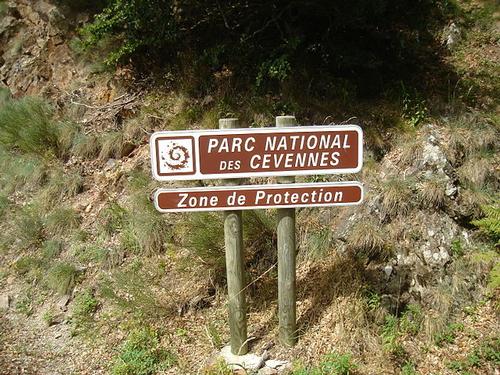 Parc National des CévennesPhoto: Lisa Estival CC 4.0 Internationaal no changes made
Parc National des CévennesPhoto: Lisa Estival CC 4.0 Internationaal no changes made
1975: Start-up of silk-worm farms using planted Japanese mulberry trees in the southern part of the Cévennes.
21th century
On 14 December 2018, the new Economic, Social and Cultural Council (CESC = Conseil Économique, Social et Culturel) of the Cévennes National Park was installed. On this occasion, Philippe Galzin was elected to head this consultative body.
See also the history of France.
Sources
BBC - Country Profiles
CIA - World Factbook
Forst, Bettina / Cevennen-Ardèche : met Grands Causses, Aigoual-Massiv en Mont Lozère : 50 wandelingen tussen Centraal Massief en Rhônedal
Graaf, Gjelt de / Languedoc, Rousillion : Cevennen, Tarn
ANWB
Pijnenburg, Hans / Languedoc, Cevennen en Tarn
Gottmer/Becht
Wikipedia
Copyright: Team The World of Info